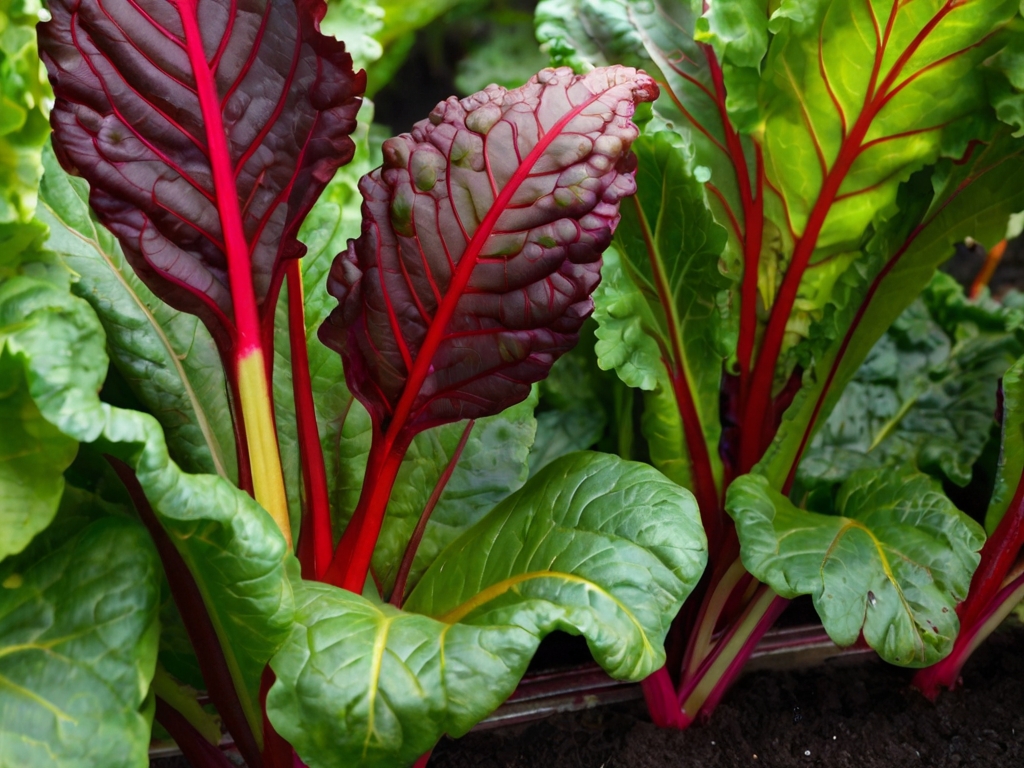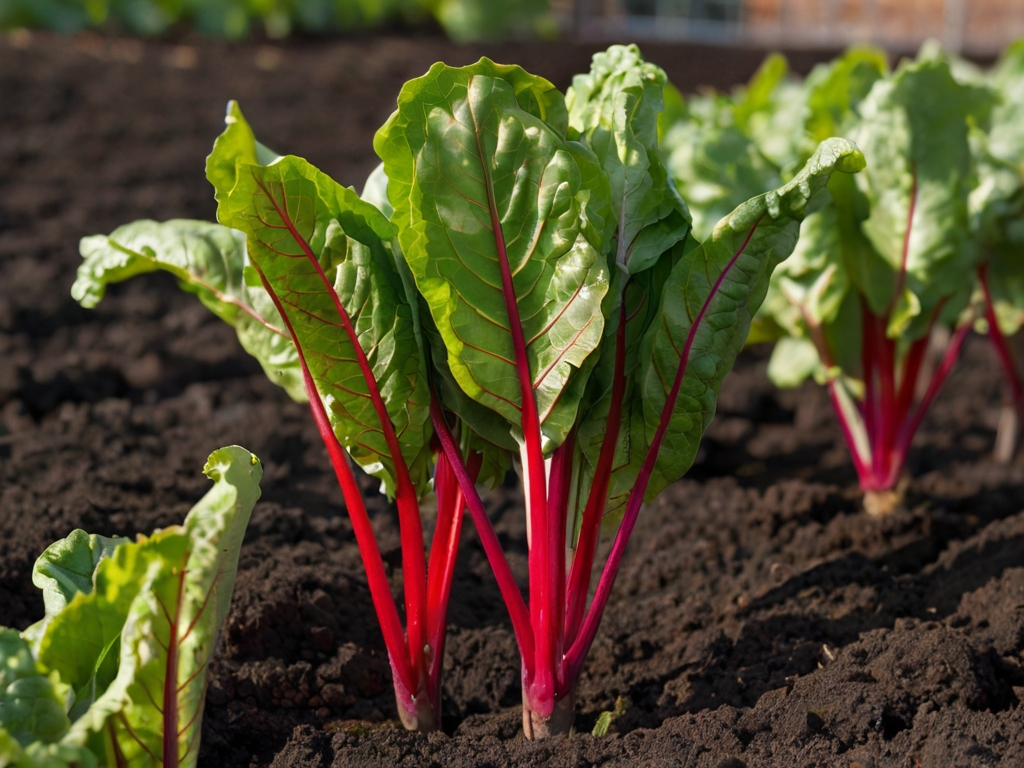Chard companion planting refers to the practice of planting chard alongside other plants that have a positive effect on its growth and health. This technique uses the natural interactions between plants to create a more productive and sustainable garden.
When certain plants are grown together, they can provide each other with nutrients, deter pests, improve soil health, and enhance overall garden aesthetics.
Table of Contents
- Benefits of Companion Planting with Chard
- The Best Companion Plants for Chard
- How to Choose the Right Companion Plants for Chard
- Companion Planting with Chard for Pest Control
- Companion Planting with Chard for Soil Health
- Companion Planting with Chard for Improved Yield
- Companion Planting with Chard for Aesthetic Appeal
- Companion Planting with Chard for Culinary Pairings
- Tips for Successful Chard Companion Planting
Benefits of Companion Planting with Chard

Increased yield: One of the main benefits of companion planting with chard is increased yield. By pairing chard with certain plants, you can create a symbiotic relationship where both plants benefit from each other’s presence. For example, planting chard alongside nitrogen-fixing plants like legumes can provide the chard with a source of nitrogen, which is essential for healthy growth and high yields.
Pest control: Another advantage of companion planting with chard is pest control. Some plants naturally repel pests or attract beneficial insects that prey on pests. By interplanting these pest-repellent or insect-attracting plants with chard, you can reduce the risk of pest infestations and minimize the need for chemical pesticides.
Improved soil health: Companion planting with chard can improve soil health. Certain plants have deep root systems that help break up compacted soil and improve drainage. Others add nutrients to the soil or attract beneficial soil microorganisms. Planting these soil-improving plants alongside chard can create a healthier growing environment for your vegetables.
Aesthetic appeal: Companion planting with chard can enhance your garden’s visual appeal. By pairing chard with contrasting colors, textures, or heights, you can create a visually stunning garden bed. This can make your garden more enjoyable to look at and can also attract pollinators and beneficial insects.
Culinary pairings: Companion planting with chard can enhance this versatile vegetable’s flavor and culinary possibilities. By planting chard alongside herbs, vegetables, or fruits that complement its taste, you can create delicious flavor combinations in your recipes.
The Best Companion Plants for Chard
When choosing companion plants for chard, it is essential to consider their compatibility regarding growth requirements, pest resistance, and overall benefits. Here are some plants that grow well with chard and why they are good companions:
1. Beans: Beans are nitrogen-fixing plants that can provide chard with a source of nitrogen, which is essential for healthy growth and high yields. Additionally, beans have shallow root systems that do not compete with chard for nutrients or water.
2. Cabbage family: Plants from the cabbage family, such as broccoli, cauliflower, and kale, are good companions for chard because they have similar growth requirements and are not susceptible to the same pests or diseases. Additionally, their tall and leafy structures can provide shade and protection for chard.
3. Marigolds: Marigolds are known for their pest-repellent properties. They emit a strong scent that deters many common garden pests, including aphids, nematodes, and whiteflies. Planting marigolds alongside chard can help protect them from these pests and reduce the need for chemical pesticides.
4. Nasturtiums: Nasturtiums are another plant that has pest-repellent properties. They attract aphids and other pests away from chard, acting as a sacrificial plant. Additionally, nasturtiums are edible and can be used in salads or as a garnish, adding beauty and flavor to your garden.
5. Herbs: Many herbs, such as basil, dill, and cilantro, make excellent companions for chard. They attract beneficial insects like bees and butterflies, which can help with pollination. Additionally, their aromatic foliage can help mask the scent of chard, making it less attractive to pests.
How to Choose the Right Companion Plants for Chard
When selecting companion plants for chard, there are several factors to consider:
1. Growth requirements: Choose plants with similar growth requirements to chard in terms of sunlight, water, and soil conditions. This will ensure that all the plants in your garden bed thrive together.
2. Pest resistance: Look for plants that repel common chard pests or attract beneficial insects that prey on pests. This will help protect your chard from pest infestations and reduce the need for chemical pesticides.
3. Complementary benefits: Consider the overall benefits that each companion plant brings to your garden bed. For example, some plants may add nutrients to the soil, improve soil structure, or enhance your garden’s visual appeal.
To ensure a successful pairing, follow these tips:
– Start with healthy plants: Choose healthy seedlings or transplants for chard and its companion plants.
– Plan your garden layout: Consider the spacing requirements of each plant and plan your garden layout accordingly.
– Rotate crops: Avoid planting chard or its companion plants in the same location year after year to prevent the buildup of pests or diseases.
– Monitor your garden: Regularly inspect your garden for signs of pests or diseases and take appropriate action if necessary.
Companion Planting with Chard for Pest Control
Companion planting can be an effective strategy for pest control in chard. By interplanting chard with certain plants, you can deter pests and reduce the risk of infestations. Here are some plants that repel common chard pests:
1. Garlic: Garlic is a natural pest repellent that can deter aphids, spider mites, and other common garden pests. Planting garlic alongside chard can help protect it from these pests and reduce the need for chemical pesticides.
2. Onions: Onions have pest-repellent properties similar to garlic and can help deter aphids, thrips, and other pests commonly affecting chard. Additionally, onions are a versatile vegetable that can be harvested and used in various culinary dishes.
3. Chives: Chives are another plant that has pest-repellent properties. They emit a strong scent that deters many common garden pests, including aphids, slugs, and Japanese beetles. Planting chives alongside chard can help protect it from these pests and reduce the need for chemical pesticides.
Companion Planting with Chard for Soil Health
Companion planting can also improve soil health in chard gardens. You can add nutrients, improve soil structure, and enhance soil health by interplanting chard with certain plants. Here are some plants that add nutrients to the soil:
1. Legumes: Legumes, such as peas and beans, are nitrogen-fixing plants that can add nitrogen to the soil. Nitrogen is an essential nutrient for plant growth and is often lacking in garden soils. By planting legumes alongside chard, you can provide it with a nitrogen source and promote healthy growth.
2. Clover: Clover is another nitrogen-fixing plant that can add nitrogen to the soil. Additionally, clover has deep root systems that help break up compacted soil and improve drainage. Planting clover as a cover crop or interplanting it with chard can improve soil structure and health.
3. Comfrey: Comfrey is a nutrient-rich plant that accumulates minerals deep within the soil. It can be used as a mulch or compost ingredient to add nutrients to the soil. Additionally, comfrey has deep taproots that help break up compacted soil and improve drainage.
Companion Planting with Chard for Improved Yield
Companion planting can increase chard yield by creating a more favorable growing environment and providing the necessary nutrients for healthy growth. Here are some plants that have a positive effect on chard growth:
1. Tomatoes: Tomatoes are good companions for chard because they have similar growth requirements and do not compete for nutrients or water. Additionally, tomatoes have tall structures that can provide shade and protection for chard.
2. Peppers: Peppers are another plant that pairs well with chard. They have similar growth requirements and do not compete with chard for resources. Additionally, peppers have a compact growth habit that allows them to be planted alongside chard without shading.
3. Cucumbers: Cucumbers are vines that can be grown vertically, allowing them to be planted alongside chard without competing for space. Additionally, cucumbers have shallow root systems that do not compete with chard for nutrients or water.
Companion Planting with Chard for Aesthetic Appeal
Companion planting can enhance your garden’s visual appeal by creating beautiful color combinations, textures, and heights. Here are some plants that complement chard’s appearance:
1. Flowers: Planting flowers alongside chard can add pops of color and beauty to your garden bed. Consider flowers with contrasting colors like marigolds, zinnias, or cosmos to create a visually stunning display.
2. Ornamental grasses: Ornamental grasses can add texture and movement to your garden bed. Consider planting grasses of different heights and textures, such as fountain grass or feather-reed grass, to create visual interest.
3. Foliage plants: Foliage plants with exciting leaf shapes or colors can also enhance the visual appeal of your garden bed. Consider plants like coleus, heuchera, or hostas to add variety and beauty.
Companion Planting with Chard for Culinary Pairings
Companion planting can enhance chard’s flavor and culinary possibilities by pairing it with plants that complement its taste. Here are some plants that pair well with chard in recipes:
1. Herbs: Herbs like basil, dill, cilantro, and parsley can be used in various chard recipes to add flavor and aroma. Consider planting these herbs alongside chard for easy access to fresh ingredients.
2. Onions and garlic: Onions and garlic are staple ingredients in many savory dishes. They pair well with chard in recipes like stir-fries, soups, and stews.
3. Tomatoes: Tomatoes and chard are a classic combination in Mediterranean cuisine. They can be used in pasta sauces, salads, or quiches.
Tips for Successful Chard Companion Planting
To ensure successful companion planting with chard, follow these general tips:
Start with healthy plants: Choose healthy seedlings or transplants for chard and its companion plants.
Plan your garden layout: Consider the spacing requirements of each plant and plan your garden layout accordingly.
Rotate crops: Avoid planting chard or its companion plants in the same location year after year to prevent the buildup of pests or diseases.
Monitor your garden: Regularly inspect your garden for signs of pests or diseases and take appropriate action if necessary.
For chard companion planting specifically, consider the following tips:
Plant chard in groups: Planting chard in groups or rows can make it easier to pair it with companion plants and manage your garden.
Provide adequate spacing: Chard needs space to grow and spread its leaves. Ensure enough spacing between chard plants and their companions to avoid overcrowding.
Consider timing: When planning your garden, consider the growth rates and maturity times of chard and its companion plants. This will help ensure that all the plants in your garden bed thrive together.
Companion planting with chard offers numerous benefits, including increased yield, pest control, improved soil health, aesthetic appeal, and culinary pairings. You can create a thriving and productive garden ecosystem by strategically pairing chard with compatible plants. Whether you are a beginner gardener or an experienced horticulturist, companion planting with chard is worth exploring. So why not try it in your garden and reap the rewards of a bountiful harvest and a beautiful landscape?

